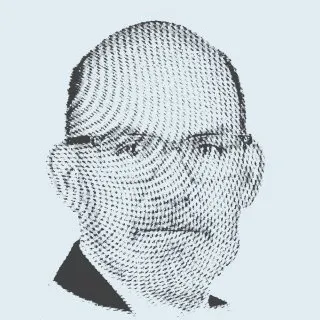On August 26, 1789, exactly 42 days after the day Bastille had been stormed, which was considered the day the French Revolution won, the Constituent Assembly in Paris issued what came to be known as the Declaration of the Rights of Man and of the Citizen. Inspired by the values of the Enlightenment, this Declaration has become one of the most important liberationary documents in world history, repeating what the American Declaration of Independence had done 13 years before.
It was drafted by Marquis de Lafayette, an aristocrat and general who had volunteered to fight the British alongside the American revolutionaries and ardently supported the abolition of slavery and the establishment of a democratic nation-state on the basis of natural law. Thomas Jefferson, who was largely responsible for drafting the American Declaration of Independence, also contributed to drafting the French document.
While half of the Declaration’s significance can be attributed to the text, the other half is in its title. That is because, until then, man and citizen belonged to two different horizons: “man” was the focal point of religions, philosophies, sciences, and all sorts of utopian inclinations, though each of them took a distinct form of interest in “man”. As for “citizen,” it was the focal point of politics, parties, public administration, education, and economic and development planning...
Although they had both always existed in their initial form, both man and citizen only emerged as historical actors relatively recently. This fusion between the two was something of an attempt to fuse the two dimensions without which the requisites of our existence itself would be profoundly lacking: a moral dimension drawn to universal ideals for all people without exception, and a realist dimension drawn to solutions for particular countries and societies. When the two are brought together, we achieve the great coupling of the abstract and the specific.
The historical moments that witnessed the realization of that promise, or succeeded in avoiding the tension between those two dimensions are quite rare. Nevertheless, we are left with dealing with their harmony as a measurement according to which politics is morally judged.
On the one hand, building on “man” alone has fueled tendencies, whether temporal or religious, that, in some instances, imposed its “man” as the only man, and disregard any link to reality and limiting themselves to preaching supposedly lofty ideals in other instances.
In the end, modalities characterized as internationalist or ecumenist emerged- modalities that, despite their self-characterization, it would be far-fetched to claim that they treated man in a manner befitting of him.
On the other hand, focusing on “citizens” alone has unleashed selfish and extreme nationalist inclinations that culminated in fascist movements that hated every other. Here too, the citizen, whom these movements had supposedly been brought forth to venerate and empower, was subjected to historically unprecedented abuse.
Between the two models, the democratic model managed to establish a greater degree of alignment among the two dimensions, though it went further with the citizen than it did with man. This is inherent to states and nations, no matter how civilized they become and how robust the hold of ideals and values over them, meaning that this will likely remain the case so long as states and nations remain on this earth.
However, the experiments of others in building societies that respect citizens and human beings are also likely to impact, negatively or positively, how democracies engage with these others, just as greater alignment among the two dimensions in the behavior of democracies could have a more positive impact on the others themselves.
As for us, at least in the Arab Levant, we have fallen upon a model that amounts to a melting pot in which crumbs of the first are mixed with crumbs of the second. The “citizen” remains half a citizen, because he simultaneously belongs to another, larger, supposed nation, at times Arab and at others Islamic. “Man,” in turn, sees his humanity shackled - either because of the weakness of our universalism, which has made us accustomed to seeing the world through the lens of “our causes,” or because of the sort of exclusive equivalence we create between the human and religious dimensions.
On top of that, zealous allegiance to sub-identities, be they sectarian or ethnic, continues to weigh down heavily on both notions, totally discoloring them with its broad brush. The task of finishing the job was taken on by regimes that have slaughtered the citizenship and humanity we could have maintained despite everything.
Wars, usually, do more than anything else to grind both the citizen and man. Today, amid the genocidal war on Gaza, we see this principle being amplified on a daily basis. It is among the great ironies of history that the French Revolution, which had established synthesis among the two dimensions, quickly marginalized and subjugated both after declaring war on Austria and Prussia. Thus, the Girondist leaders that had launched the war were dragged to the guillotine as the groundwork for the “Reign of Terror” was laid.
The rule and the sound standard remain. They call on us to create a balance between the two dimensions, as one who does not make a good citizen does not become, as a human being, an effective political actor. The opposite, in all likelihood, is also true.










